Exploring Australia Felix
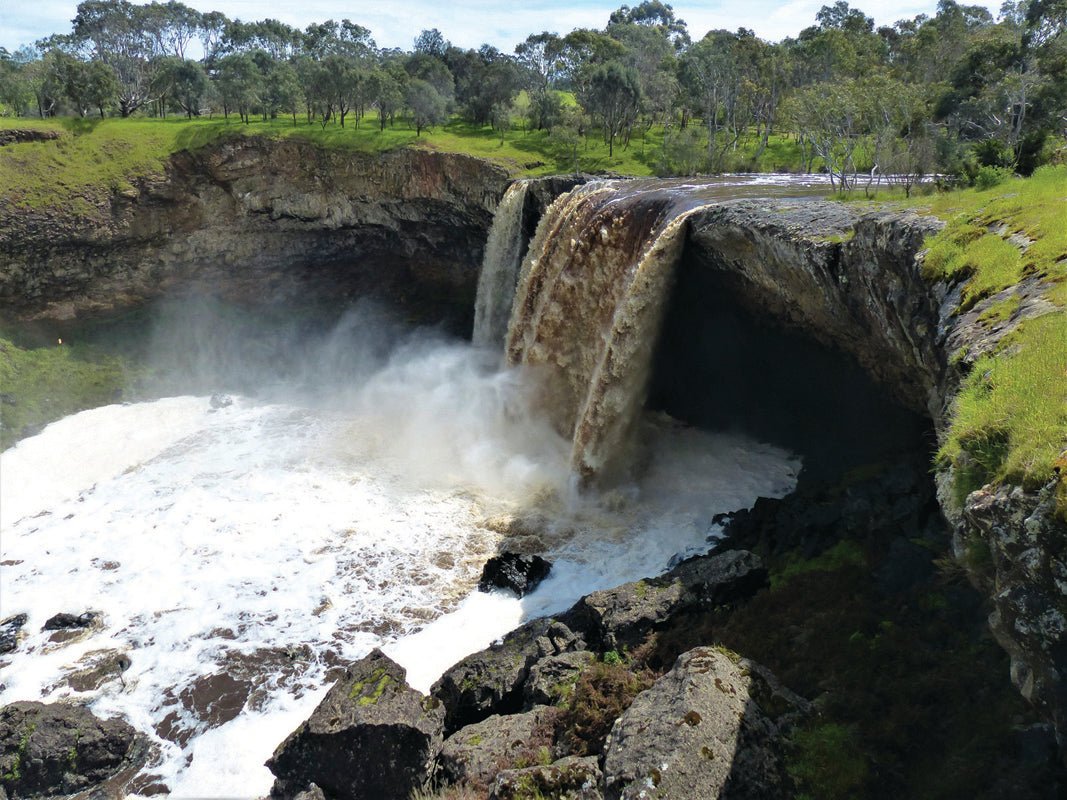
Tihe Glenelg River begins its journey in the Gariwerd (Grampians), a majestic mountain range rising out of flat farmlands in southwestern Victoria, and winds its way 350kms amid rich pasturelands through Balmoral and Casterton to the coastal village of Nelson.
The Glenelg was like a highway to Aboriginal peoples, who have lived in this region for thousands of years – Gariwerd alone is home to around 140 Aboriginal rock-art sites up to 22,000 years old.
The Kanalgundidj, part of the Jardwadjali language group, held large corroborees at a site now called Island Park, near the banks of the Glenelg River in Casterton. Reports from early European settlers in the 1840s describe more than 800 people gathered here.
Island Park is now home to Casterton’s football oval and other sporting facilities, but nearby Ess Lagoon, shaded by huge, gnarled redgums, is little different today than it was when Kanalgundidj camped around its shores.
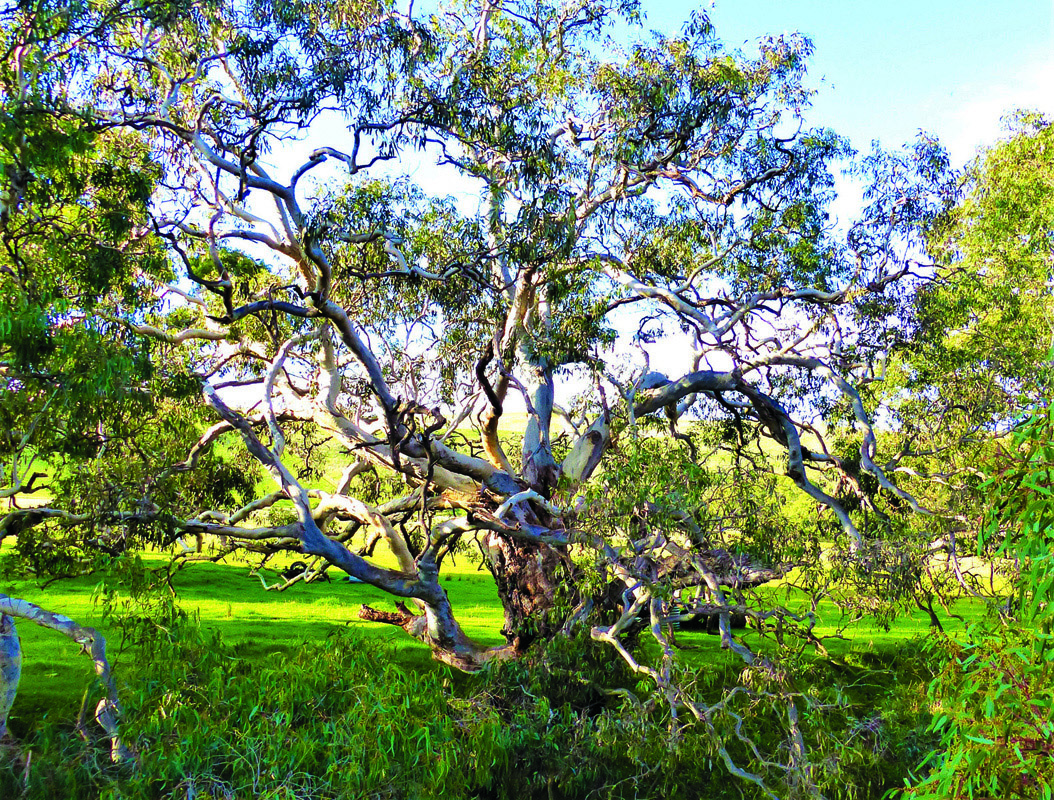 Old red gum on the Wannon River
Old red gum on the Wannon River
The lagoon was, and still is, an important nesting and feeding site for native birds, from heron, cormorant, swamp hen, wood duck, swan, parrot, kookaburra, kite and wattlebirds to little blue wrens darting among the trees.
These days, travellers lap up the serenity of the idyllic lagoon, where those with self-contained caravans can stay for free for up to one month. For non-self-contained campers, Casterton’s caravan park at Island Park is a short stroll to the Glenelg River.
Situated 354kms west of Melbourne, Casterton lies in the heart of what Major Thomas Mitchell dubbed Australia Felix – Latin for ‘fortunate land’ – when he led a confrontational expedition through the region in 1836, describing ‘green hills, soft soils and flowery plains’.
Dating from 1846, Casterton, population around 1800, has retained much that is charming about many country towns, including a parade of historic buildings. Driving through town past its two pubs and farm supply stores, you invariably see utes with barking kelpies in the back, which are as much a part of the fabric of the town as the majestic redgums along the riverbanks.
Casterton’s main thoroughfare is also home to the Australian Kelpie Centre, celebrating Casterton’s role in the origins of Australia’s iconic working dogs.
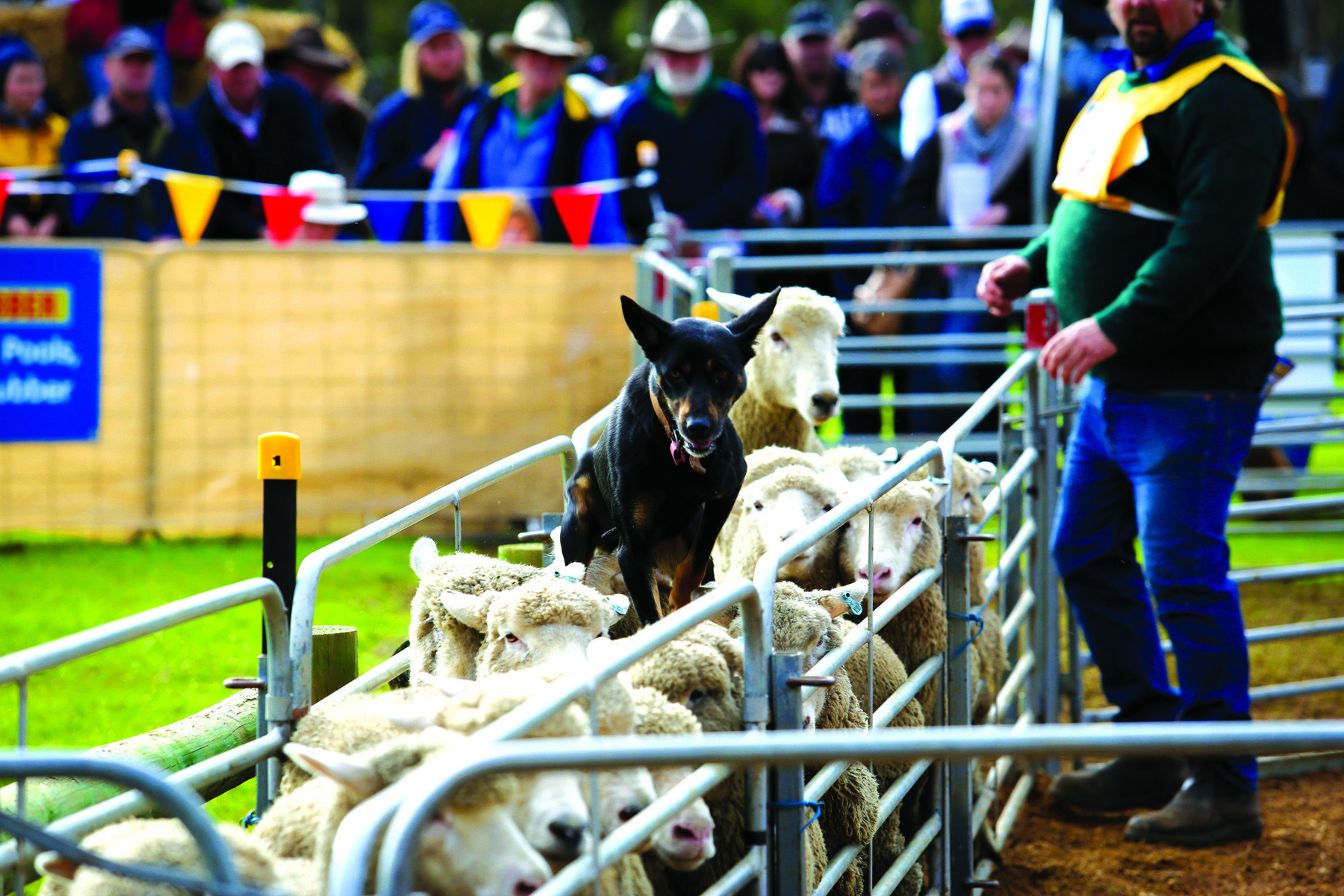 Casterton Kelpie Muster
Casterton Kelpie Muster
Renowned for their loyalty and tenacity as they work with all types of livestock, kelpies were originally bred from Scotch Collies in the 1870s at Warrock, one of many large pastoral stations around Casterton, some of which date from the 1830s and ‘40s.
Each year on the Queen’s Birthday long weekend (12–14 June 2021) dog lovers gather in Casterton’s old streets for the annual Australian Kelpie Muster, which includes the Kelpie Festival and the Australian Premier Working Dog Auction.
This year the town celebrates the 25th anniversary of this unequivocally Aussie event, and Warrock Homestead, featuring 36 fascinating buildings dating from the 1840s and ‘50s, will also be open across the weekend.
The countryside around Casterton is mesmerising, and full of hidden charms you can explore far from the hustle and bustle of car and truck-choked freeways. Driving country roads, you’re likely to see a few utes and tractors, and plenty of wildlife such as emu, wallaby, echidna, koala, kangaroo, wedgetail eagle, masses of cockatoos and, around Strathdownie on the Mount Gambier Road, beautiful brolga.
Exploring the region, dotted with rural settlements with names such as Kadnook, Wombelano, Coojar, Brit Brit, Gritjurk, Bulart and Carapook, you’re likely to discover large historic homesteads, old bridges and train lines, the ruins of humble homes of post-World War I soldier settlers, 1840s shepherds huts and tiny timber churches.
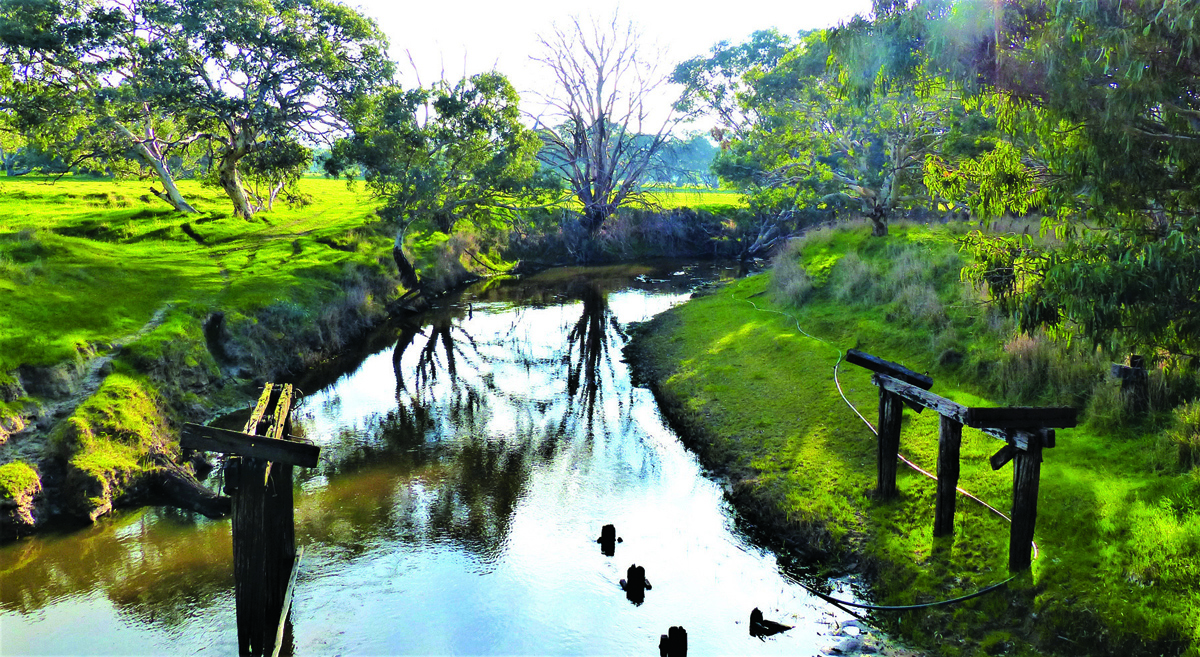 Old bridge on the Wannon River near Casterton
Old bridge on the Wannon River near Casterton
Casterton to Penola
From Casterton, it’s a pleasant 62km drive north-west past large farms and pockets of native bush across the border into South Australia and the historic town of Penola. Penola is famous as the gateway to the legendary Coonawarra wine region, and also an important location in the life of Mary McKillop, Australia’s first saint, who taught here from 1862 to 1866.
Many pilgrims walk the ‘Aussie Camino’, a 174-kilometre trek from Portland to Penola, via some of Victoria and South Australia’s most spectacular coastline. The Camino takes in parts of the Great South West Walk, Cape Nelson, over the border to the fishing village of Port MacDonnell, inland to Mount Gambier, and on to Pelona, where they visit the Mary McKillop Interpretive Centre and Museum School.
The stone Woods McKillop Schoolhouse stands on the corner of Petticoat Lane, Penola’s oldest residential area. Five quaint cottages dating from the 1850s, owned by the National Trust of South Australia, line the street, some of which you can wander through for a glance of life here 170 years ago. While there, pick fresh herbs and vegetables from the gardens for a coin donation.
Just north of Penola is a sea of vineyards stretching some 14km, home to the 30 wineries of the Coonawarra region and which has been producing wines since the first grapevines were planted in 1891. Today, pilgrims in search of the perfect drop can meander among the cellar doors of one of Australia’s most famous cool-climate regions for cabernet sauvignon.
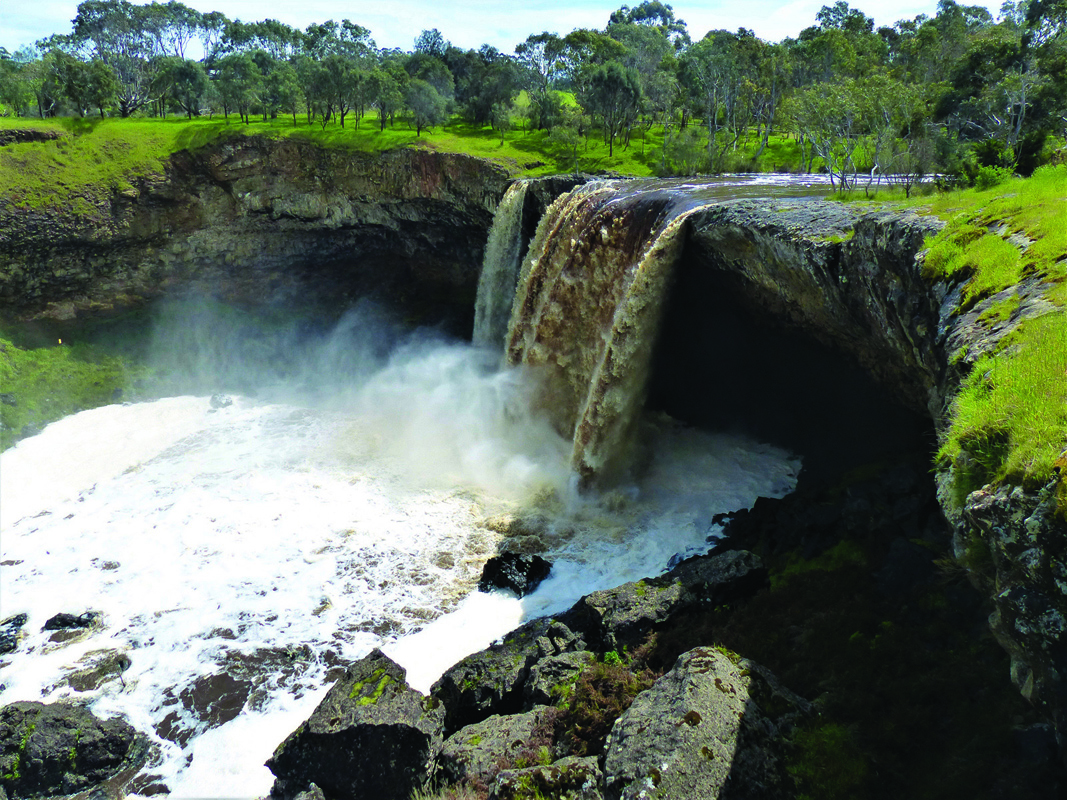 The area is full of natural wonders
The area is full of natural wonders
Penola to Edenhope
It’s 68km from Penola back across the border into Victoria and the small town of Edenhope, passing farmlands and a few villages including Aspley, said to be home to the oldest continuing horse-racing club in Victoria.
A few minutes’ walk from Edenhope’s main street are the blue waters of Lake Wallace, named for William Wallace – said to be a descendant of one of Scotland’s greatest national heroes – who first settled the region in 1843.
Covering 200ha, the lake is ideal for boating, water skiing, fishing for redfin and trout, and photography – the area has recorded 120 bird species, including the rare red-tailed black cockatoo – and there are bird hides dotted along the 5km walking track around the lake.
Edenhope’s main street features stores, including a supermarket, fish and chip shop, butcher and … a Dachshund Museum. This mecca to the sausage dog, the only one of its kind in the Southern Hemisphere, sells the likes of dachshund keyrings and mugs, along with non-dachshund-related products, from local honey to artworks.
From Edenhope, you can backtrack to Casterton via the village of Dergholm – home to the Menzies Hotel, known as the ‘Pub in the Scrub’ – and 6km north, Baileys Rocks, deep within the 10,000ha Dergholm State Park, is a collection of giant green granite boulders that formed some 500 million years ago.
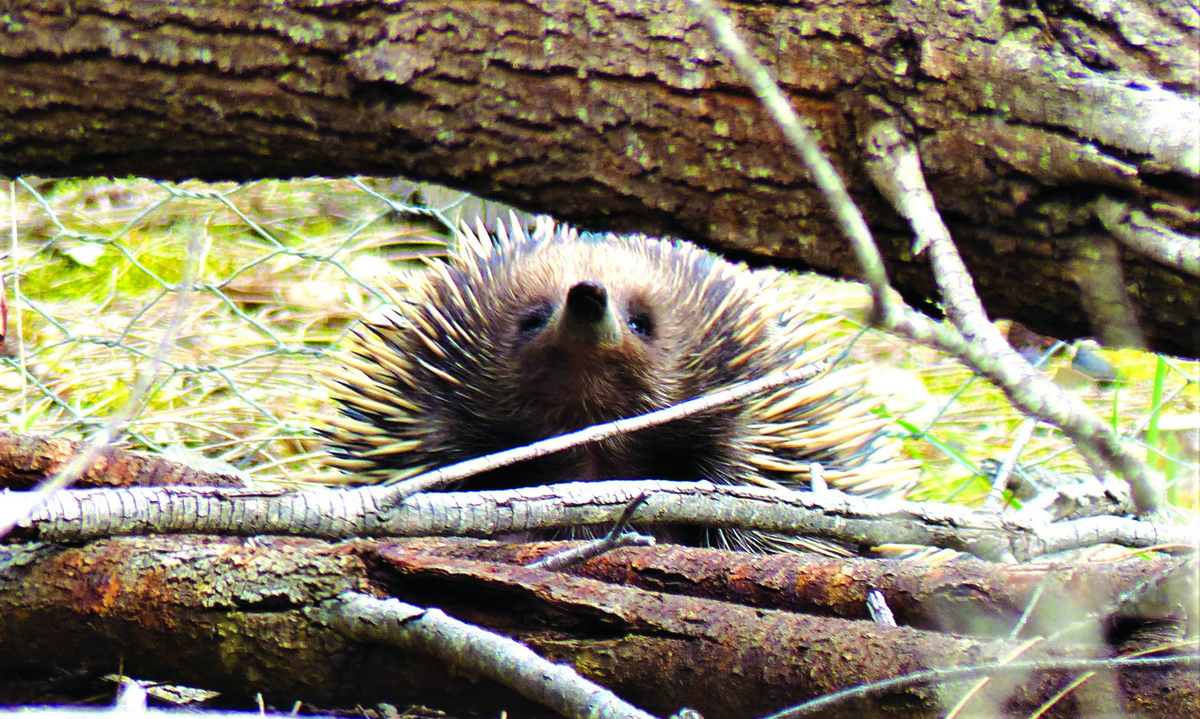 An echidna saying hello
An echidna saying hello
Edenhope to Harrow
It’s 36km from Edenhope to Harrow, one of Victoria’s oldest inland townships. The first business, a store, was established here in 1840.
Nestled amid rolling hills along the banks of the Glenelg River, Harrow is the burial place of Unaarrimin (Johnny Mullagh), a star of the Australian Aboriginal cricket team, which toured England in 1868. A member of the Jardwadjali people, Unaarrimin was born on Mullagh Station, about 16km north of Harrow.
Not to be missed is the Johnny Mullagh Interpretive Centre/Harrow Discovery Centre, which celebrates the achievements of Australia’s First XI. The centre also houses a Sir Donald Bradman exhibition.
Harrow’s splendid colonial buildings include the general store, built in 1881, where the walls are lined with shelves containing groceries. Original spice drawers and flour bins take pride of place, and all merchandise is sold across a long wooden counter, as it was a century ago.
Harrow features three churches, a mechanic’s institute, and the grim Harrow Log Goal, constructed of rough-hewn logs in 1859. Another jewel in the town’s colonial crown is the Hermitage Hotel, built in 1848.
This wonderful old pub, constructed from bluestone, is reminiscent of ancient English taverns, with its low-slung ceilings, wood and stone walls and polished floorboards. Dining here is a treat, especially on ‘Fresh Fish Friday’, when crayfish, oysters and salmon may be on the menu.
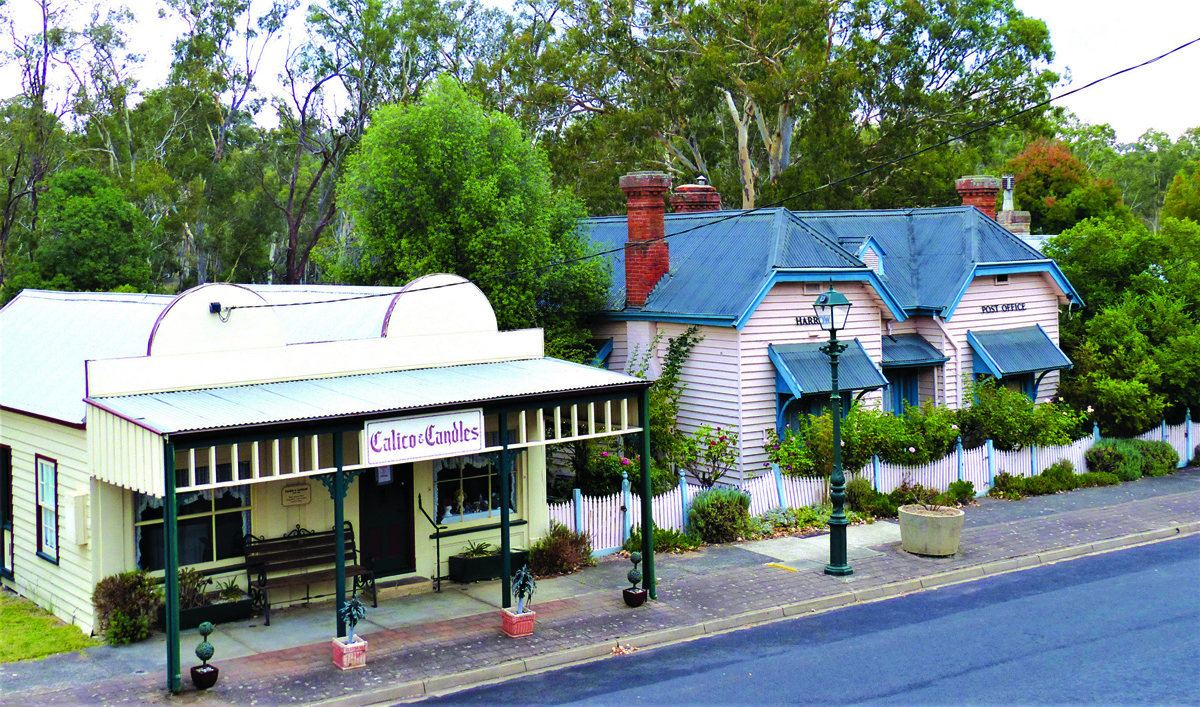 Harrow's colonial buildings
Harrow's colonial buildings
Harrow to Balmoral
From Harrow, it’s 31km southwest to Balmoral, another town snuggled along the banks of the Glenelg River amid pretty countryside.
A bush inn opened near a ford across the river in 1842, used by people travelling on what was then bush tracks between Melbourne and Adelaide, and the township of Balmoral grew around it.
Balmoral was along the route taken by many Chinese immigrants between 1857 and 1863, when thousands walked some 500km from Robe, on South Australia’s Limestone Coast, to Victoria’s rich goldfields around Bendigo and Ballarat, to avoid paying a one-pound poll tax if they disembarked in Victoria.
You can see the original ford across the Glenelg River along Rocklands Road, which heads 13km out of town to Rocklands Reservoir, built in 1953. When the reservoir was completed, part of the old road between Melbourne and Adelaide was forever buried underwater.
Victoria’s largest water reservoir at 67.5sqm, Rocklands is popular for fishing – trout, Murray cod, perch, redfin and yabbies are caught here – boating, canoeing and camping.
Balmoral has a general store, the Western Hotel – a classic country pub serving traditional fare – and a terrific op shop.
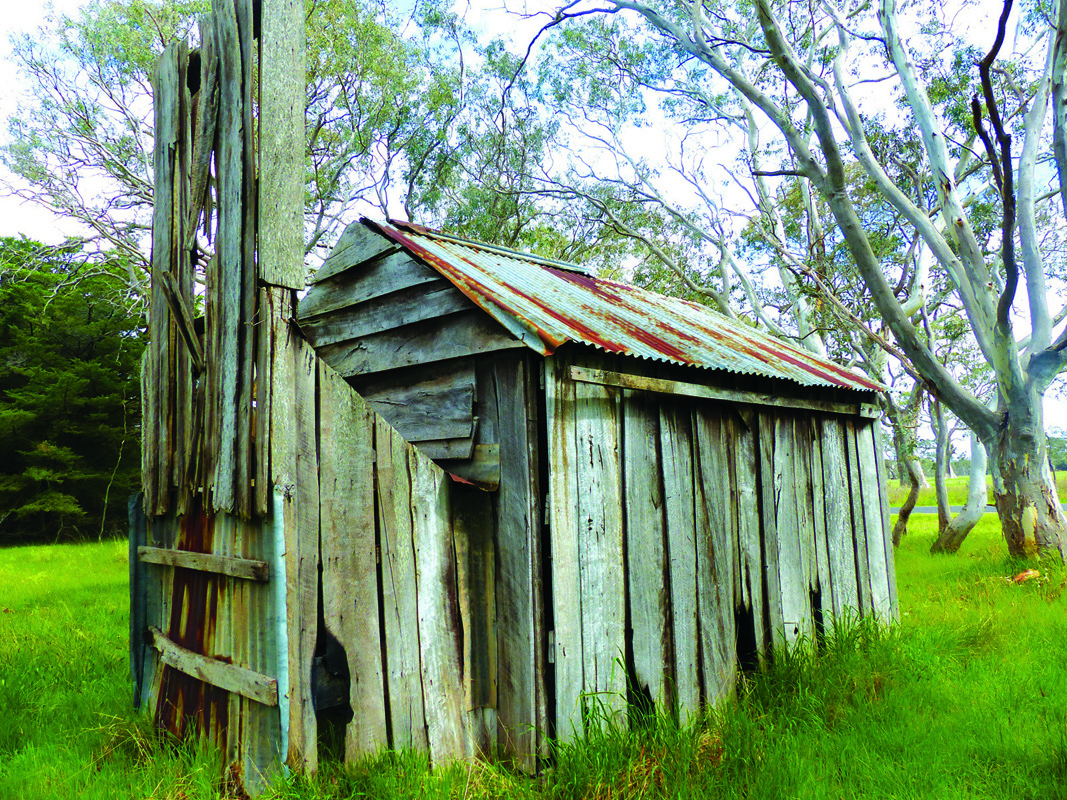 Shepherds hut from the 1840s in Engelfield
Shepherds hut from the 1840s in Engelfield
Balmoral to Cavendish
From Balmoral, it’s 40km south-east to Cavendish, another small and historic town amid the rich pastures of Australia Felix.
The Wannon River flows through Cavendish, which is situated at the southern end of the Grampians range. The town has four churches, a memorial hall, a general store that includes the Bridge Café, and the Bunyip Hotel, a Cavendish institution since the 1840s.
The Bunyip Hotel was established as Waddell’s Inn in 1842 and, like many country inns, originally traded at a river crossing. The Bunyip Hotel you see today was built in 1938 when the old hotel was demolished.
The hotel’s award-winning chef, James ‘Jimmy’ Campbell, grew up in the Cavendish area, where his family has farmed for generations, before heading to the bright lights of Melbourne and Sydney to hone his skills at the multi-award-winning MoVida Restaurant.
Campbell returned to Cavendish in 2017, and with business partner Matt Nettleton, has transformed the Bunyip Hotel into one of regional Victoria’s top foodie destinations, with menus highlighting the best of local, seasonal produce. Don’t miss the five-course Chef’s Table, held on Sundays if you’re visiting the area.
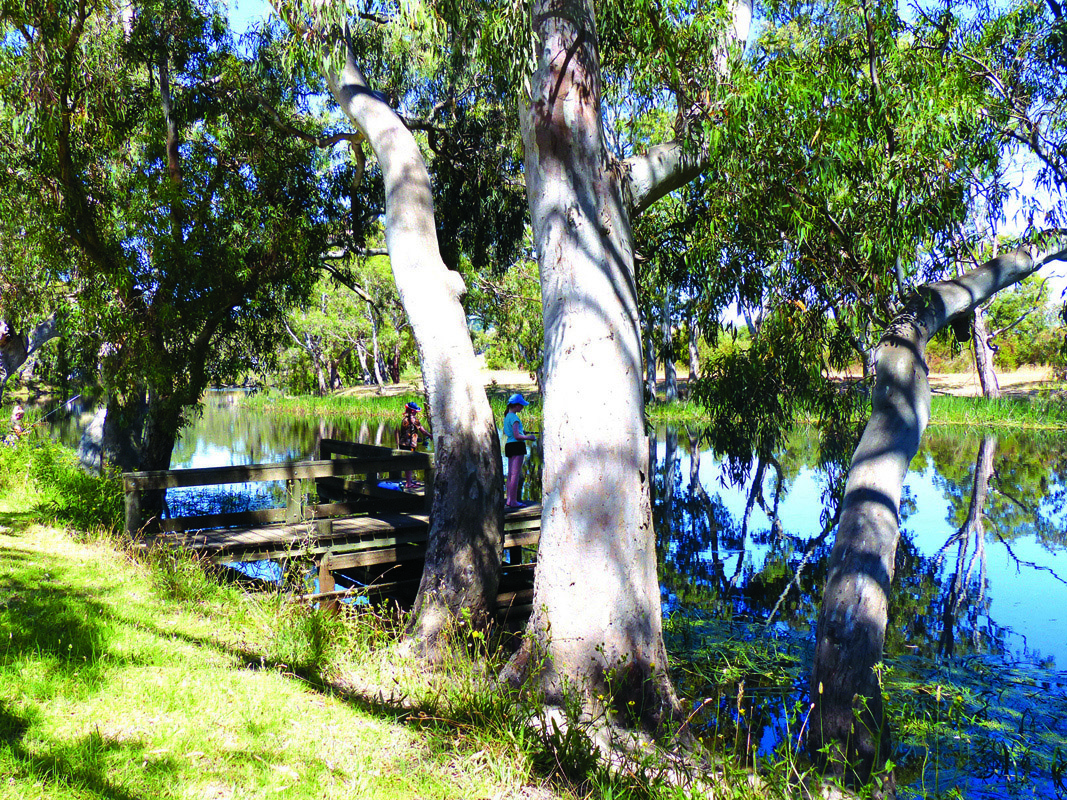 Fishing at Ess Lagoon
Fishing at Ess Lagoon
Cavendish to Coleraine
From Cavendish, it’s a 37km drive across hills and down dales south-west to Coleraine, where the first hotel, the Koroite Inn, opened in 1845.
On the way, consider a detour to Wannon Falls, 16km east of Coleraine, and nearby Nigretta Falls. Wannon Falls cascades over a 30m precipice into a deep pool below. Further downstream rapids wind their way picturesquely around large basalt bounders.
Wannon Falls are linked to Nigretta Falls by a scenic road winding 10km through the countryside. While this waterfall is smaller, it’s no less lovely, cascading from a rocky outcrop, with various tributaries sprouting from the sides falling to a series of rocky terraces. Both waterfalls have picnic tables and barbecue facilities, and are at their biggest and best after rainfall.
Like Casterton, Coleraine lies amid hilly countryside and features an array of historic buildings. Winding down hills into town, you pass the town’s racecourse where Australia’s oldest ongoing jumps race, the Great Western Steeplechase, was first held in 1858. Poet Adam Lindsay Gordon competed in Coleraine’s Steeplechase five times in the 1860s, which inspired his poem, The Fields of Coleraine.
Another famous visitor was Polish-born cosmetics queen Helena Rubinstein, who arrived in Australia in 1896 aged 25, having fled Poland when her father suggested marriage to a wealthy widower. Rubinstein escaped that fate by visiting her uncle Louis Silberfeld, a Coleraine shopkeeper.
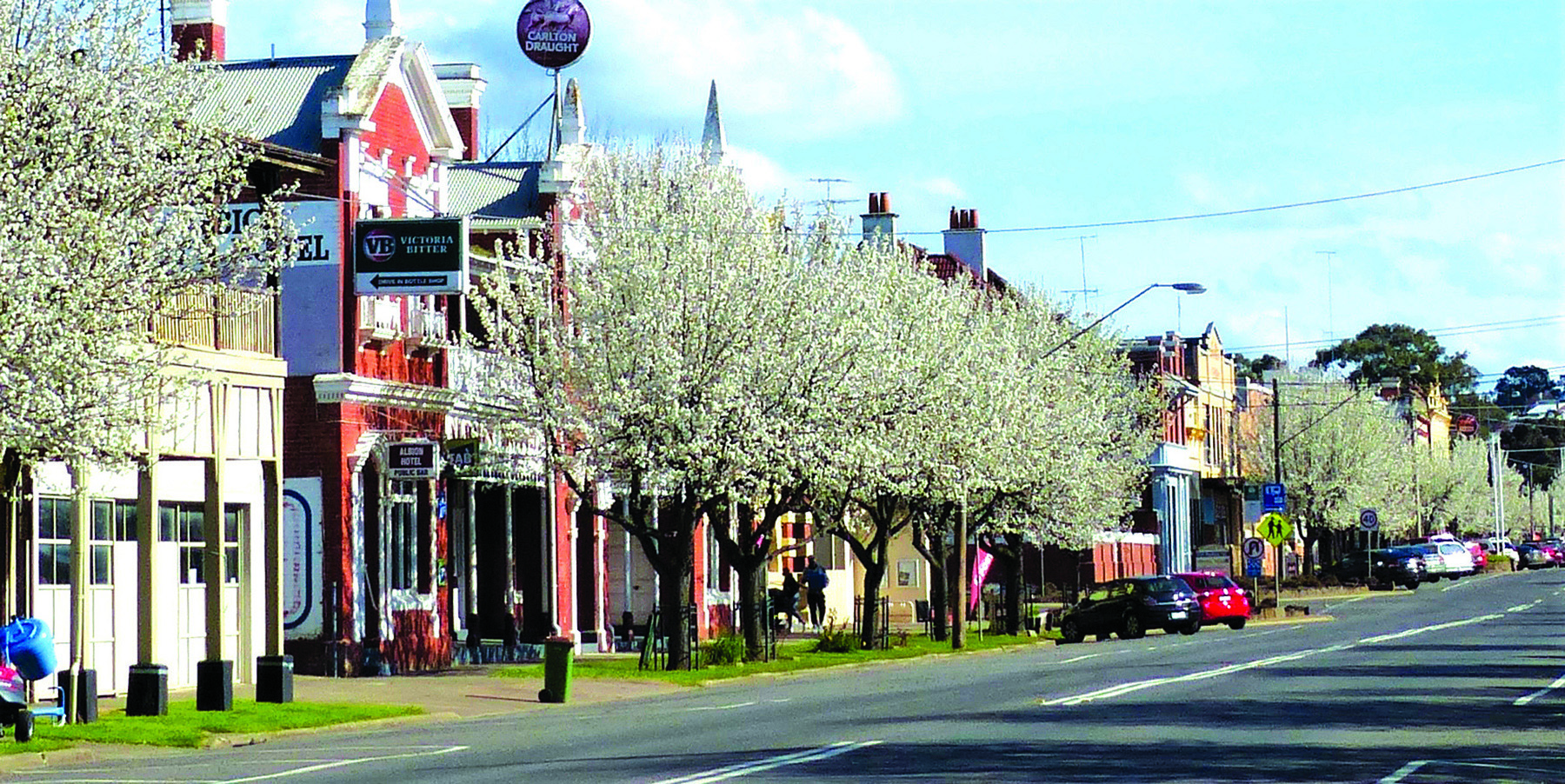 Casterton main street with blossom trees
Casterton main street with blossom trees
Affected by Australia’s dry heat, Rubinstein made a moisturiser with lanolin - in plentiful supply in the sheep-filled hills around Coleraine - and went on to launch her worldwide beauty empire.
The streets where Rubinstein once strolled still feature many of the buildings she knew, such as the Black Horse Inn, the old bank, courthouse, railway station, and her former home, the old Silberfeld house and store at 107 Whyte St, Coleraine.
Today the town has two pubs, the Coleraine Hotel and The National, both serving meals, and is also home to Glenelg Fine Chocolates. Just outside town is the Peter Francis Points Arboretum, 37ha containing more than 10,000 native plants.
From Coleraine, it’s 30km back to Casterton. Along the way, you pass Muntham Station which was established by the Henty family in 1837.
One of Muntham’s old gatehouses is now Wando Lodge Wines, where owner Susan produces fine cabernet sauvignon, managed according to organic principles, and serves her wine with tasting plates from a rustic tasting room overlooking the redgum-studded hills of this captivating corner of Victoria.
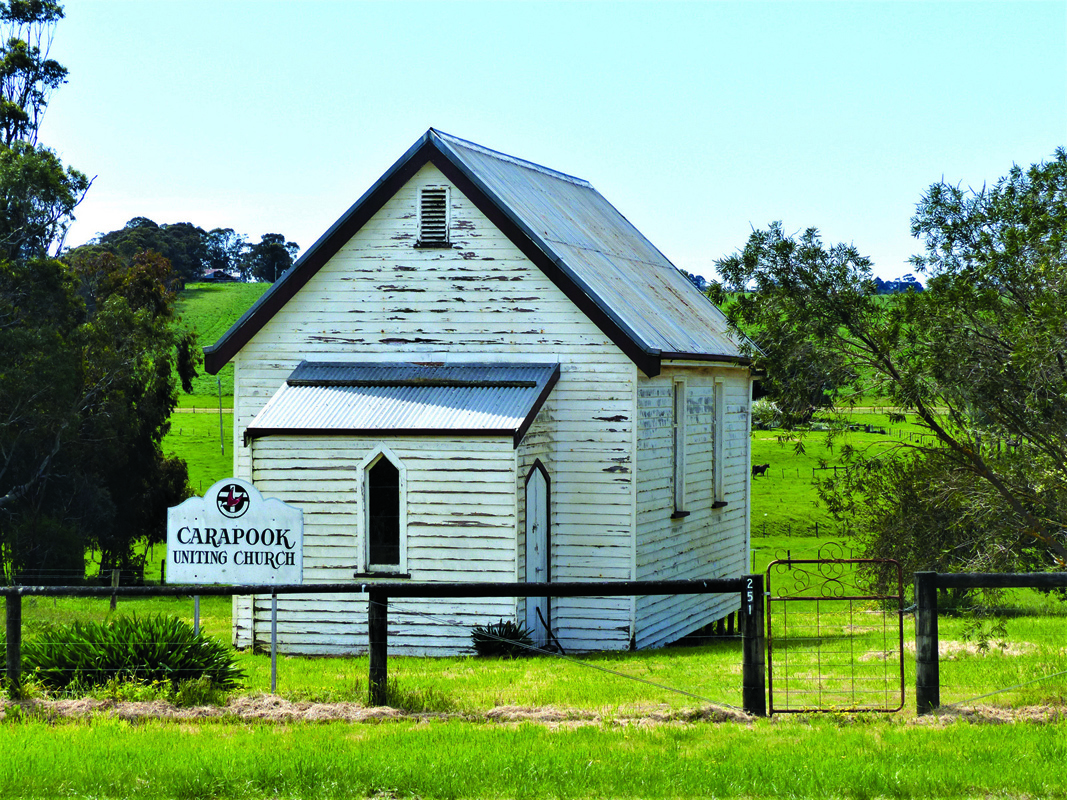 Carapook Church is from times gone by
Carapook Church is from times gone by
FAST FACTS
For more information on Casterton, visit casterton.org.au; for the Australian Kelpie Muster, which is a ticketed event ($10 per day), castertonkelpieassociation.com.au.
For information on Warrock Homestead, visit warrockhomestead.com.au.
STAY
Island Caravan Park Casterton has powered sites from $28 per night.
28 caravan sites within close proximity to facilities, including the town’s sparkling swimming pool. Stroll to the main street.
P 0457 414 187
W glenelg.vic.gov.au
Penola Caravan Park has powered sites from $38 per double.
Laundry, barbecues, bike hire and wood fires
W penolacaravanpark.com.au.
Coonawarra Bush Holiday Park, next to a vineyard and heritage bushland, has powered sites for from $35 per double per night, as well as glamps and cabins.
Camp kitchen, barbecues, bike hire.
W cbhp.com.au.
Edenhope Lakeside Caravan Park is situated on the banks of Lake Wallace. Powered sites from $33.
Camp kitchen, free gas barbecue, recreation room with wood fire and television, stroll to main street.
W edenhopelakeside.com.au.
Johnny Mullagh Reserve in Harrow has powered sites for $30 per night.
Tranquil bush setting, free barbecue, free laundry
W harrow.org.au.
Travelling without the van? Harrow’s Hermitage Hotel has accommodation from $95 per double, hermitagehotelharrow.com.
FREE CAMPING
Casterton’s Ess Lagoon has free camping for up to one month for recreational vehicles that are fully-self-sufficient, including shower and toilet.
Bailey’s Rocks Campground has free camping, with grassed sites and plenty of shade, toilets, fuel barbecues, picnic tables. Walking tracks wind among the amazing rocks.
Around the edges of Rocklands Reservoir are six free camping grounds. One of them, Glendinning Camp, is suitable for caravans, and has a boat ramp, toilets, and is pet-friendly.
Wannon Falls Reserve Campground has free camping for 24 hours, with 10 sites for caravans and campervans.







